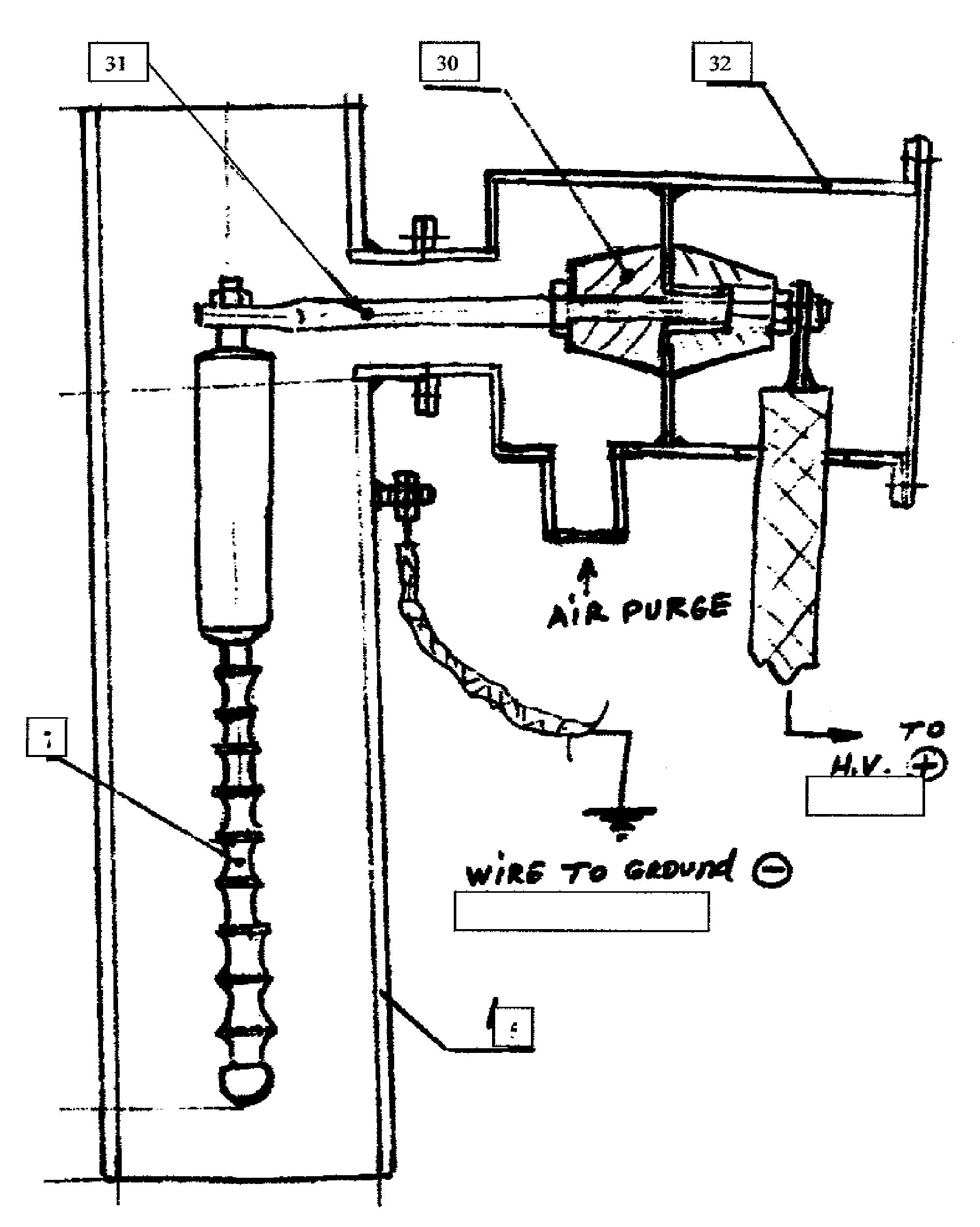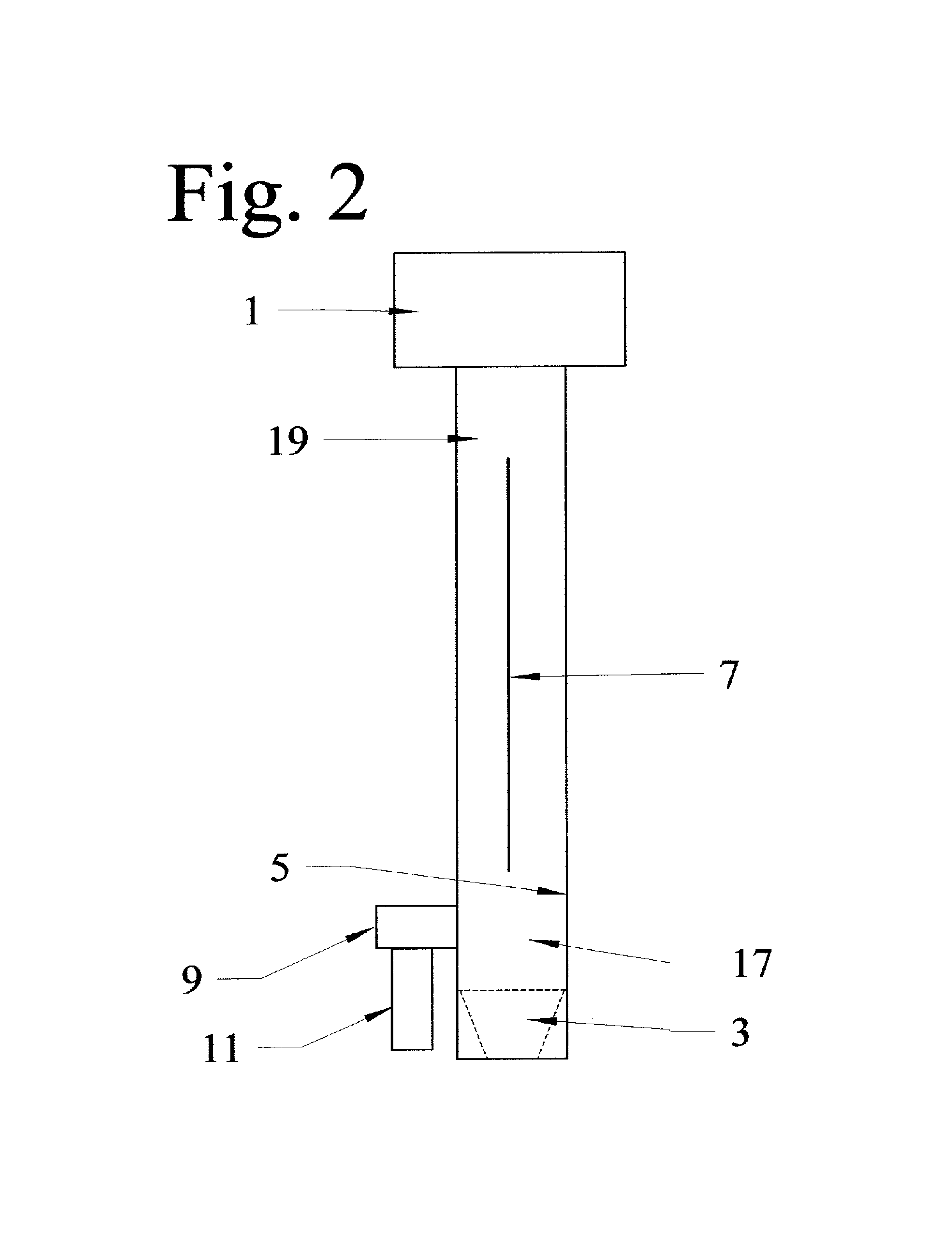Aerosol collection apparatus and methods
a collection apparatus and anthrax technology, applied in the field of aerosol collection apparatus and methods, can solve the problems of insufficient detection limits of anthrax bacilli, inhalation of low but lethal doses of anthrax or other biological warfare [bw] aerosol agents, and inability to detect anthrax bacilli effectively, etc., to achieve low pressure, high air flow, and low power consumption
- Summary
- Abstract
- Description
- Claims
- Application Information
AI Technical Summary
Benefits of technology
Problems solved by technology
Method used
Image
Examples
example 1
[0045]For collection efficiency measurements, we use suspended 1-micron fluorescent beads obtained from Duke Scientific Corporation, Palo Alto, Calif. 94303. The fluorescent beads permit direct measurements with the aid of a fluorometer of the amounts of particles captured in the collection medium. The concentrations of particles in the sampled air are measured with the aid of a reference filter and their variations within out 3,000-liter test chamber are monitored with an APS [Aerodynamic Particle Sizer] instrument.
[0046]The described system was assembled, tested, and fine-tuned as follows:
[0047]1. The lower inlet portion of the WEP unit had a plastic inlet connected through a 3″ diameter pipe to the ultrasonic humidifier and test chamber.
[0048]2. Using a redesigned rotor, the power required to circulate air through the WEP sampler to and from the test chamber at a rate of 510 l / min was only 8.4 watts [2 amps at 4.2 volts].
[0049]3. The following test procedure was worked out:
[0050]...
PUM
 Login to View More
Login to View More Abstract
Description
Claims
Application Information
 Login to View More
Login to View More - R&D
- Intellectual Property
- Life Sciences
- Materials
- Tech Scout
- Unparalleled Data Quality
- Higher Quality Content
- 60% Fewer Hallucinations
Browse by: Latest US Patents, China's latest patents, Technical Efficacy Thesaurus, Application Domain, Technology Topic, Popular Technical Reports.
© 2025 PatSnap. All rights reserved.Legal|Privacy policy|Modern Slavery Act Transparency Statement|Sitemap|About US| Contact US: help@patsnap.com



